
6 minute read
KEEPING IT REAL, VIRTUALLY
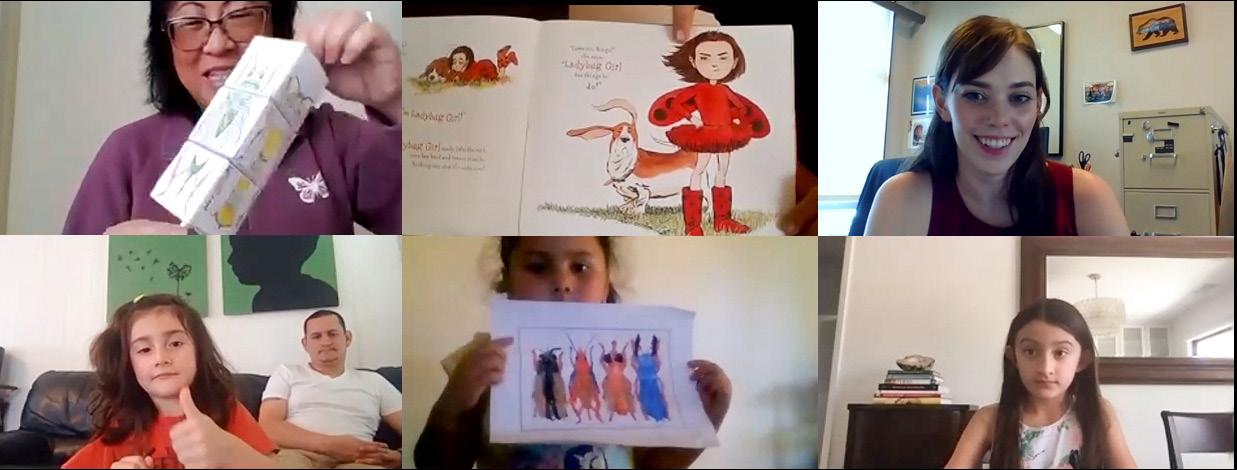
Advertisement
Top: Celebrating curbside pickup for the Museum’s new online store
Middle: Nature Adventures staff and campers testing virtual camps curriculum
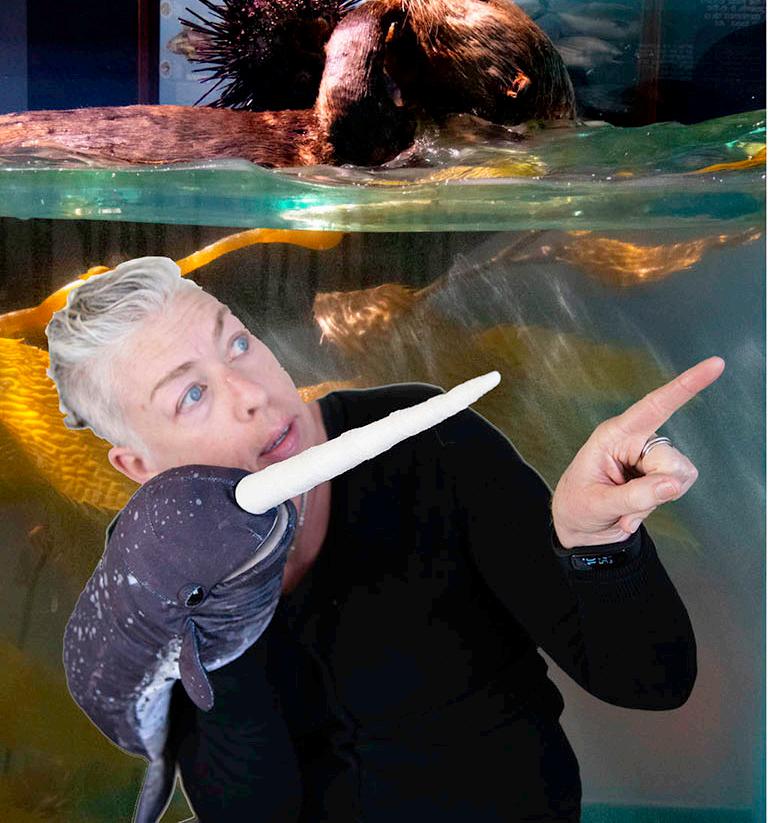
Circle: Virtual field trips from School and Teacher Services bring our exhibits into students’ homes.
As docents know, there’s nothing like the excitement of kids on a field trip. In March, that wonderful source of renewable energy disappeared overnight. “Going from seeing hundreds of kids at one time to not being able to see anyone outside my household for months was jarring,” says School & Teacher Services Coordinator Jessica Prichard. With students at home, the need to pivot hit our education staff fast. They rushed to create sbnature.org/ from-home, a collection of ways to explore nature at home, online, and outdoors. Website visitors and praise from families validated their hard work.
Nature Adventures Manager Ty Chin, Ph.D., led her team to adapt their summer camps curriculum, master new skills, and safely assemble and distribute scores of Camp Kits. There’s been no rest, either: fall classes are on. “Just keep swimming,” is Chin’s motto. Kind words from happy camper families help keep her spirits afloat: “In this difficult time, this camp has been a gift,” wrote one eloquent parent. We’ve continued to serve adults directly as well. Our monthly Science Pub at Dargan’s Irish Pub & Restaurant—derailed by the temporary venue closure— returned via Zoom. “It’s been a challenge to connect on this new platform, but we’re reaching people all around the globe, which is exciting,” says Community Education Manager Stefanie Coleman, M.S. She’s planning more dates for online art workshops in the popular Art Meets Science series, as well as ongoing Science Pubs.
Senior Manager of Guest Services Kim Zsembik and her team purchased puzzles, games, and art supplies in anticipation of a busy summer. With the Museum closed, they launched an online store (sbnature.org/store) to funnel those toys to cooped-up kids with fewer outlets for play and learning. Zsembik is grateful to store customers: “Thank you for shopping local, and supporting not only a small business, but a nonprofit.”
Development staff organized online events sharing the knowledge of our experts with supporters. Members enjoyed Zoom editions of the Cocktails with a Curator series. They were BYOB (bring your own beverage), but as ever, Museum and Sea Center experts brought scientific expertise to the party. The Leadership Circles of Giving (LCG) presented Legends of the Halls, a series of fascinating talks about people who shaped our institution,
Specimen featured in the workshop Art Meets Science: Agate Painting with Gold Leaf
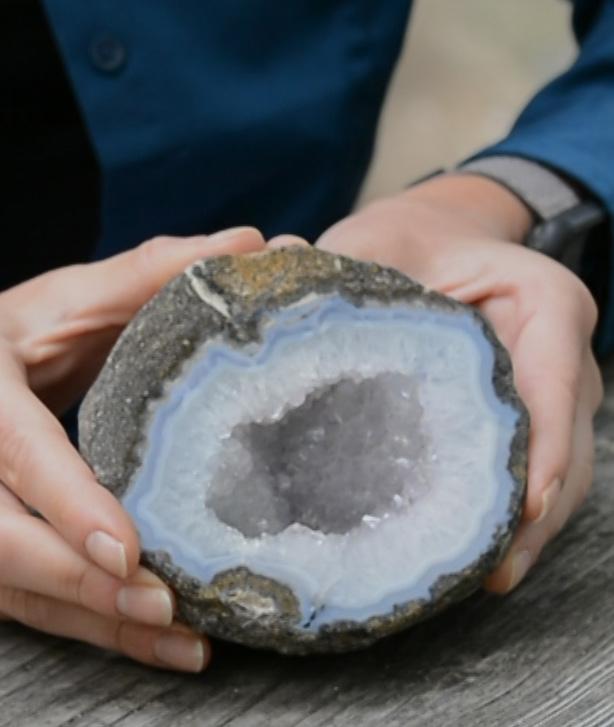
including Peggy Maximus (of Maximus Gallery), and David Banks Rogers, founder of our Department of Anthropology. We heard tales of the first Sea Center from those who helped build and run it. “We wanted to look back while keeping hopeful for the future,” says Leadership Circles of Giving Development Officer Diane Devine, who wants to hear ideas for future topics from Members.
The way we connect has changed, but the reasons we do it remain the same. Throughout the shift to online activity, we’ve continued to center ourselves in nature, and we hope you have, too. “I’ve started paying more attention to the nature in my own neighborhood, and it’s informed the virtual programs I create for schools,” says Prichard. “It’s easy to take this beautiful area for granted, but when you’re stuck in it, you’re also forced to see its beauty and complexity.”
THINKING OUTSIDE
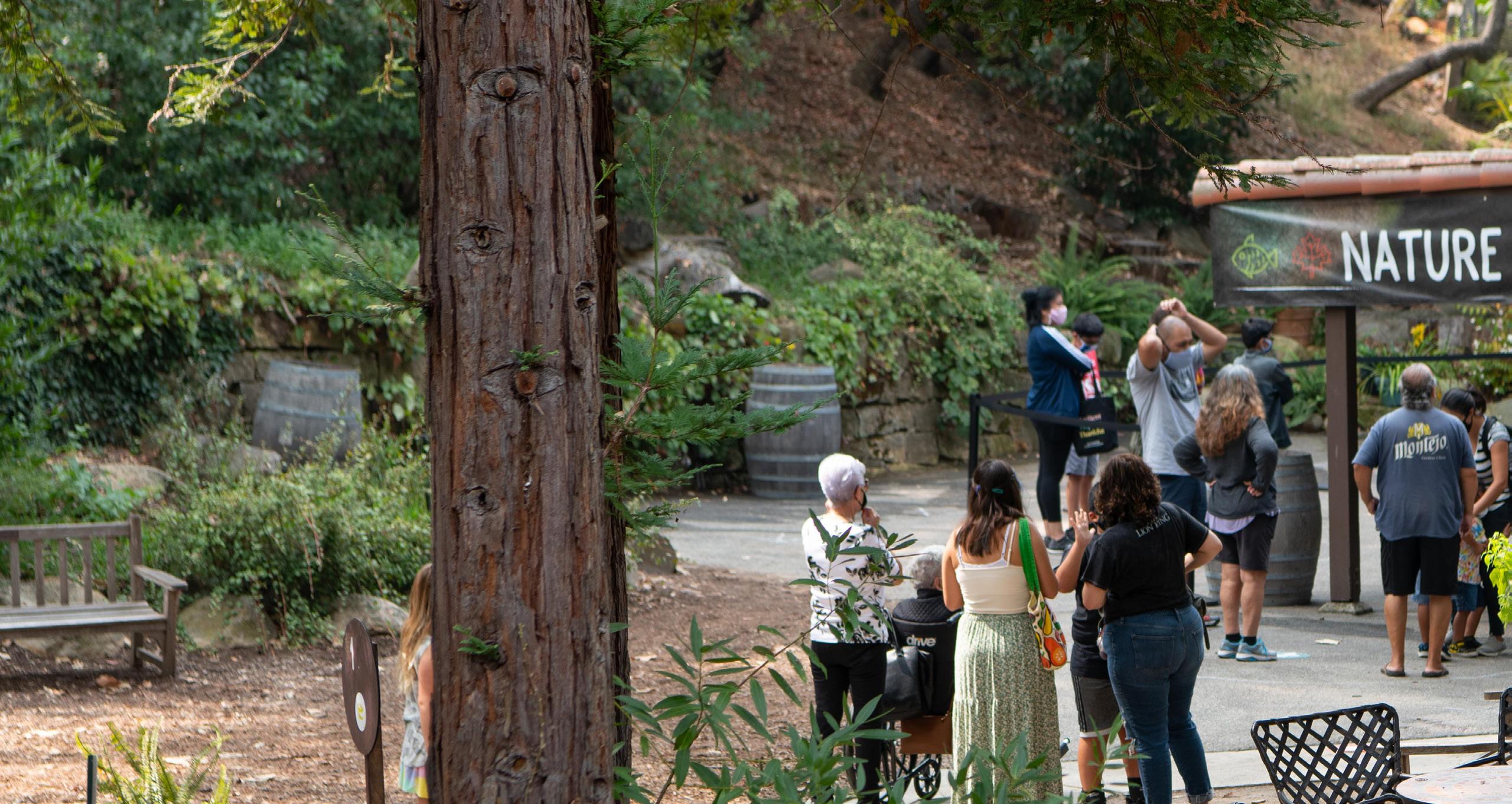
On Sunday, June 14, we welcomed guests back to the Museum’s outdoor areas, starting with Members. We knew we’d need your feedback. You’d be the first to sample locally-made hand sanitizer—one of many creative solutions by our Department of Facilities—and experience our new one-way flow. You were the first to discover how amazing Butterflies Alive! was in 2020, at a time when the fate of a century-old institution seemed to be resting on the back of a butterfly.
It’s been challenging. While our earnings dwindled, our staff needs rose, both to run the pavilion and help guests stay safe. “Members and guests allowed us to not be perfect,” Senior Manager of Guest Services Kim Zsembik says. You know that “we try really hard to make you feel safe and happy here.” 2020 took flight as the feedback fluttered in: “better than ever,” “well-organized,” “felt safe,” “impressed with the setup!” Zsembik worked with her team to create that setup, separating the pavilion into zones, with a mellow bell to mark each group’s time in a zone. “I’m really proud of our team,” she says. “I feel joy and gratitude when I hear praise for the details we put in. It took creativity and thoughtful feedback, but guests loved our slowed-down zoned pavilion.”
While the Sea Center was closed, Sea Center staff brought their interpretive talents to the pavilion and marine life to the Museum. Guests could touch sharks and watch butterflies in the same visit! Bringing sea life to the Museum, keeping staff at work, and filling urgent needs in the pavilion was a win-win. “We were happy to help,” says Sea Center Volunteer and Interpretation Manager Sam Macks Franz, M.M.A. “It was a chance to connect with guests and Members that we missed over the last few months.” Volunteers and staff from all over the organization filled gaps in the schedule. “The CEO has donated his time to work in the Butterfly Pavilion, as well as managers and department heads,” notes Nature Education Manager Sabina Thomas, Ph.D.
As butterfly season waned, Dr. Thomas enriched our outdoor spaces. “We all got used to the changes,” she reflects, “and recognized that we’re flexible and resilient.” Staff at both our campuses have dramatically shifted resources to create new outdoor activities. “It took many different steps and the input of many departments.” Still, she’s especially proud of her team of naturalists, who—along with long-time docents—work as human field guides in our outdoor spaces, stimulating and answering guests’ questions about nature and science. “They are so talented and resourceful.”
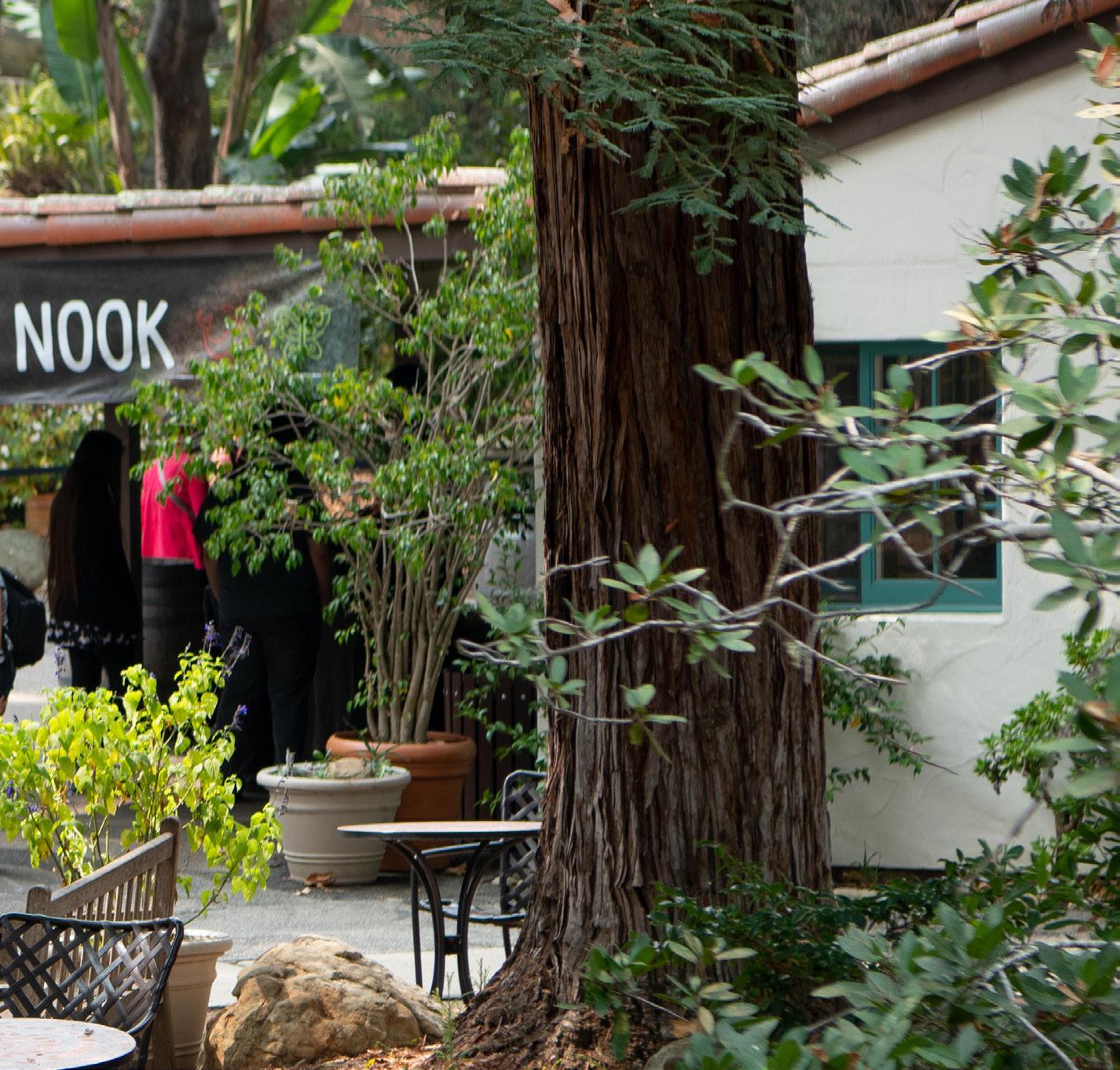
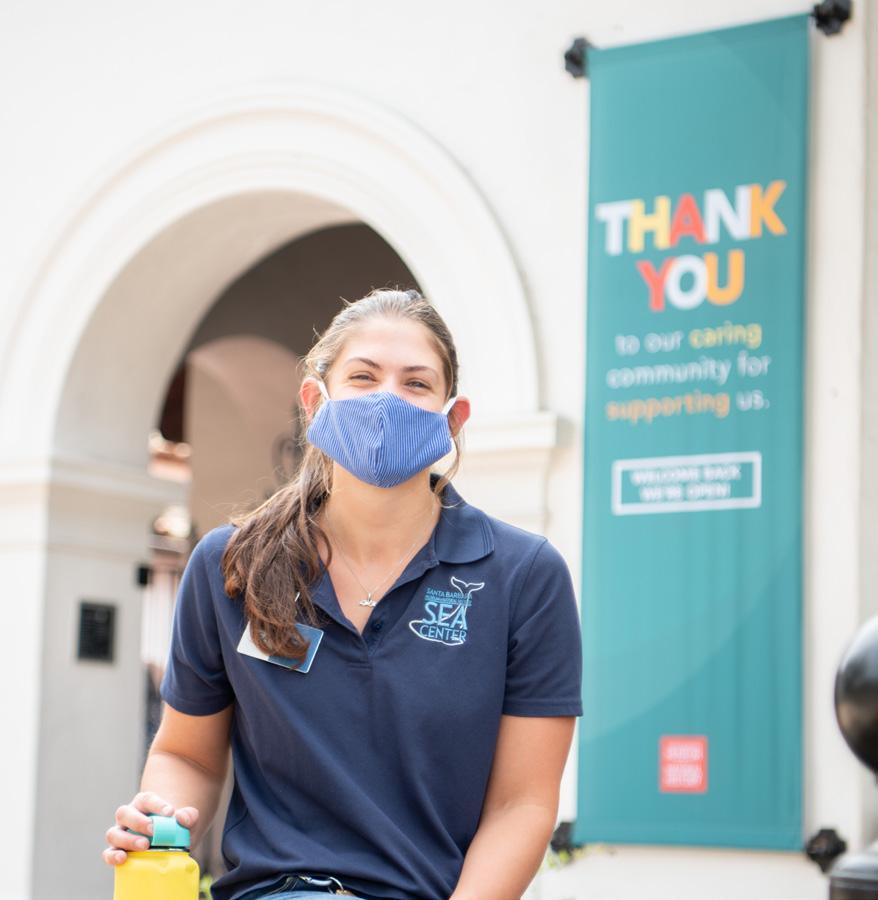
The same goes for our volunteers, “part of the Museum family,” as Volunteer Manager Rebecca Fagan Coulter describes them. New barriers to personal connections haven’t changed the fact that “people—volunteers, visitors, colleagues—still want the same things: to lead a purposeful life, with a passion for nature. The history of this institution and the things it’s weathered in the past are my best teachers in knowing we’ll persist.”
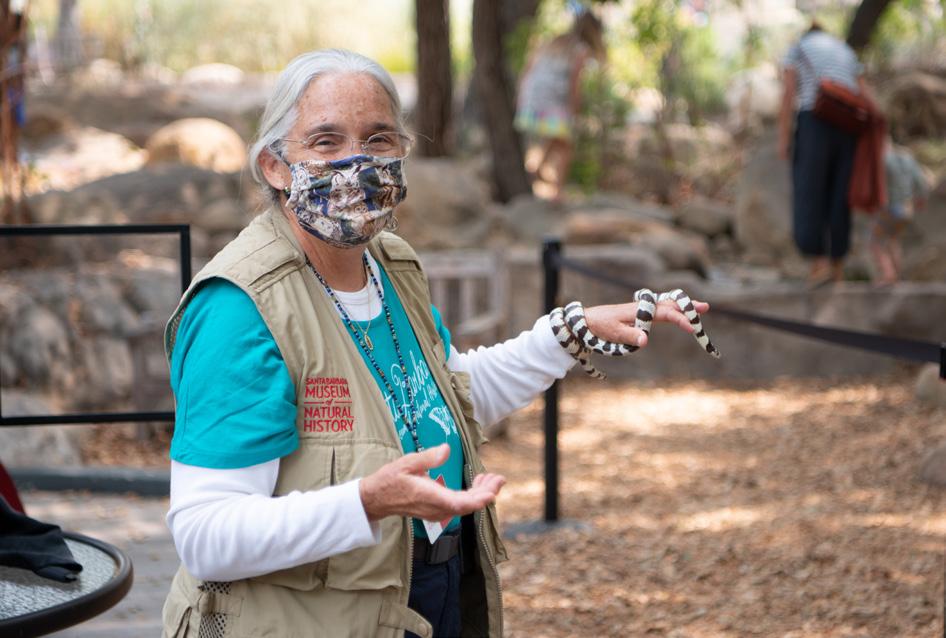
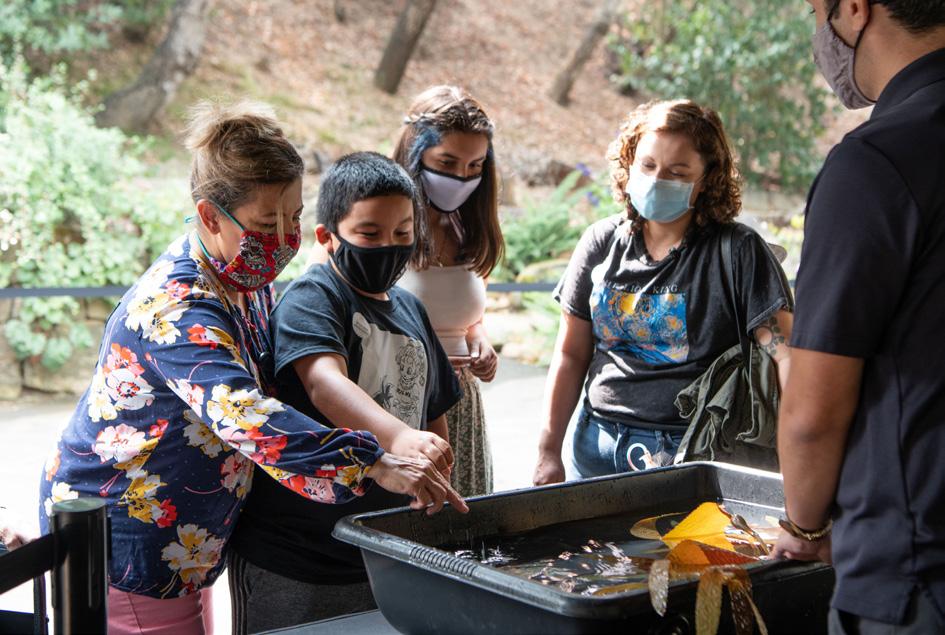
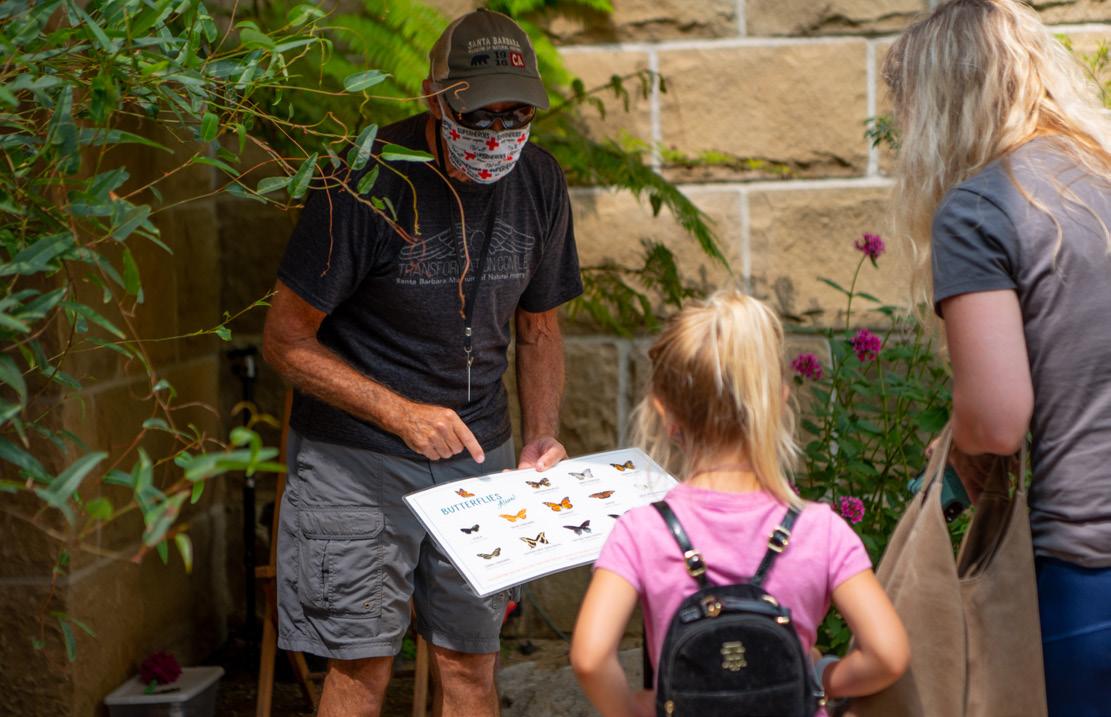
Top: Naturalist Betsy Mooney shares Chico, the Backyard’s new California Kingsnake.
Middle: Guests meeting Swell Sharks from the Sea Center at the Museum’s Nature Nook
Circle: Interpreter Sarah Cowan, one of many Sea Center staff supporting the Museum this summer
Bottom: Curator Emeritus of Facilities Gary Robinson volunteering in the Butterfly Pavilion







